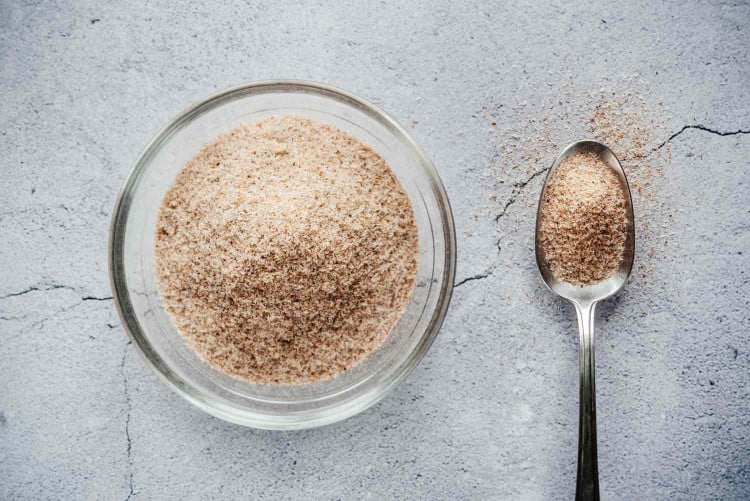Marijuana Users Have Higher Levels of Heavy Metals in Blood, Urine
- New research found heavy metals in the blood and urine of people who consumed marijuana.
- The two metals in question are lead and cadmium, both of which can spark a variety of health issues.
- Experts recommend checking your state's regulations and processes for testing retail marijuana products to ensure that, if you do partake in consumption, you're getting the safest products available.
Marijuana smokers may unknowingly be consuming heavy metals, a new study shows.
Heavy metals accumulate in the body and have been linked to a host of health issues including cancer, cognitive impairment, and heart disease.
And, people consuming marijuana may be more at risk of these toxins entering their bloodstream.
New research, published last month in Environmental Health Perspectives, found that adults who consumed marijuana had significantly higher levels of two metals associated with long-term health issues: lead and cadmium.
“Cadmium and lead stay in the body for years, long after exposure ends,” Tiffany Sanchez, PhD, an assistant professor of environmental health sciences at Columbia's Mailman School of Public Health, who co-authored the new research, told Health.
Here's how heavy metal might enter the body from marijuana use, how the type of marijuana consumption matters in relation to toxin absorption, and why legalization and regulation of marijuana make monitoring the substance for heavy metals tricky.

Getty Images / Jamie Grill
The Level of Toxic Heavy Metals From Marijuana Use
In order to understand whether or not heavy metals are associated with marijuana use, Sanchez and her team tested blood and urine samples from 7,200 adults who were part of the National Health and Nutrition Examination Survey. Of those, 358 had reported using marijuana within the past 30 days.
The team tested blood samples for five metals; they tested urine samples for 16 metals.
Since tobacco use has been associated with higher levels of heavy metals in the body, the researchers also tested the samples for an alkaloid found in tobacco but not cannabis, called cotinine. They then adjusted the data to be sure they could determine how marijuana use alone contributed to heavy metal consumption.
The data revealed that people who used marijuana, regardless of whether they used tobacco, had 27% higher blood lead levels than those who did not report using either marijuana or tobacco. They also had 22% higher levels of cadmium.
“We do believe this is coming from cannabis use and not tobacco,” said Sanchez.
Regular Marijuana Use May Increase Risk of Heart Disease, Study Finds
The Type of Marijuana Use May Impact Heavy Metal Absorption
The new study did not determine how the way people consumed marijuana—edibles, smoking, or vaping—might have differently impacted heavy metal levels. However, what experts understand about how the body absorbs heavy metals holds clues as to which forms of marijuana use are riskier.
“There is no safe level for lead exposure," Sanchez said, "and with lead, the absorption rate from inhalation is virtually 100%."
According to the Centers for Disease Control and Prevention (CDC), the rate of absorption through inhalation of cadmium can be up to 50%.
“Everything you’re inhaling is getting into your bloodstream,” Sanchez said.
Both lead and cadmium cause long-term damage to the body.
In June of this year, the American Heart Association (AHA) published a statement noting that both lead and cadmium increase a person’s risk of developing cardiovascular disease, including coronary artery disease and stroke.
Additionally, inhaling cadmium—not eating it—causes chronic obstructive pulmonary disease.
Research also links lead to the loss of cognitive function, including memory impairment and dementia.
The toxin is labeled as a likely carcinogen and a probable human carcinogen by the Department of Health and Human Services (HHS) and the Environmental Protection Agency (EPA), respectively.
Taking in lead and cadmium through ingestion or inhalation is a problem for the body, but the lungs may have a more difficult time getting rid of the toxins than the digestive system.
Irfan Rahman, PhD, director of Flavor Inhalation Toxicology Research at the University of Rochester Medical Center told Health that while the gut contains enzymes that can help the body get rid of heavy metals (particularly lead), the lungs don’t have the same system in place.
This means inhaling marijuana, by smoking or vaping, may be more damaging than taking an edible.
On top of this, the logistics of vaping could add another aspect of heavy metal exposure for marijuana users.
The reduction process that extracts cannabidiol from the cannabis plant can introduce heavy metals and other contaminants, including solvents used to extract essential oils from the flower, Rahman explained.
If done incorrectly, these lab-made marijuana extracts have a higher chance of releasing metals when they hit the hot coils of a vape pen, he said.
Ultimately, the marijuana plant is uniquely suited to contain higher amounts of heavy metals than your average plant—no matter how it's broken down to be consumed.
Cannabis is naturally adept at absorbing heavy metals from the soil in which it’s grown, where both cadmium and lead naturally exist, says Sanchez, making the plant a ‘hyper-accumulator.’
These heavy metals are stored in the leaves and flowers of the plant—the part that’s used as a drug.
Regulation Standards Surrounding Marijuana Create Opportunity for Toxins
Without federal standards for testing, safety checks for marijuana products happen at the state level, leaving every state that legalizes the sale of marijuana to decide which contaminants producers are required to test for.
The patchwork regulation creates opportunities for people to be exposed to potentially harmful contaminants at a time when marijuana use is increasing.
The most recent National Survey on Drug Use and Health found that nearly 20% of Americans 12 or older had used marijuana at least once in the past year, whether by smoking, vaping, or consuming edibles. Among people 18–25, more than a third had used marijuana in the past year.
“I would recommend that consumers know whether it is a legal and regulated plant that they are buying, and if their state is regulating for metals,” said Sanchez.
A study from 2022, found that 36 states and Washington D.C. did test legally sold marijuana products for at least some pesticides, microbes, solvents, and other contaminants. In California alone, nearly 10% of extracts and about 2.5% of flowers screened did not pass safety standards.
At the federal level, the Food and Drug Administration (FDA) closely regulates tobacco products, including screening them for impurities. However, the same safety net does not exist for cannabis.
“We need uniform standards from the federal government and states should have very stringent requirements before companies can launch into the market,” says Rahman. “We don't have the same regulation and monitoring for marijuana as we do tobacco products.”
Many Americans Believe Marijuana Smoke Is Safer Than Cigarette Smoke—They’re Wrong


:max_bytes(150000):strip_icc()/GettyImages-1807240274-2c7c39cb23f34a97bb2d8620911c343d.jpg)







